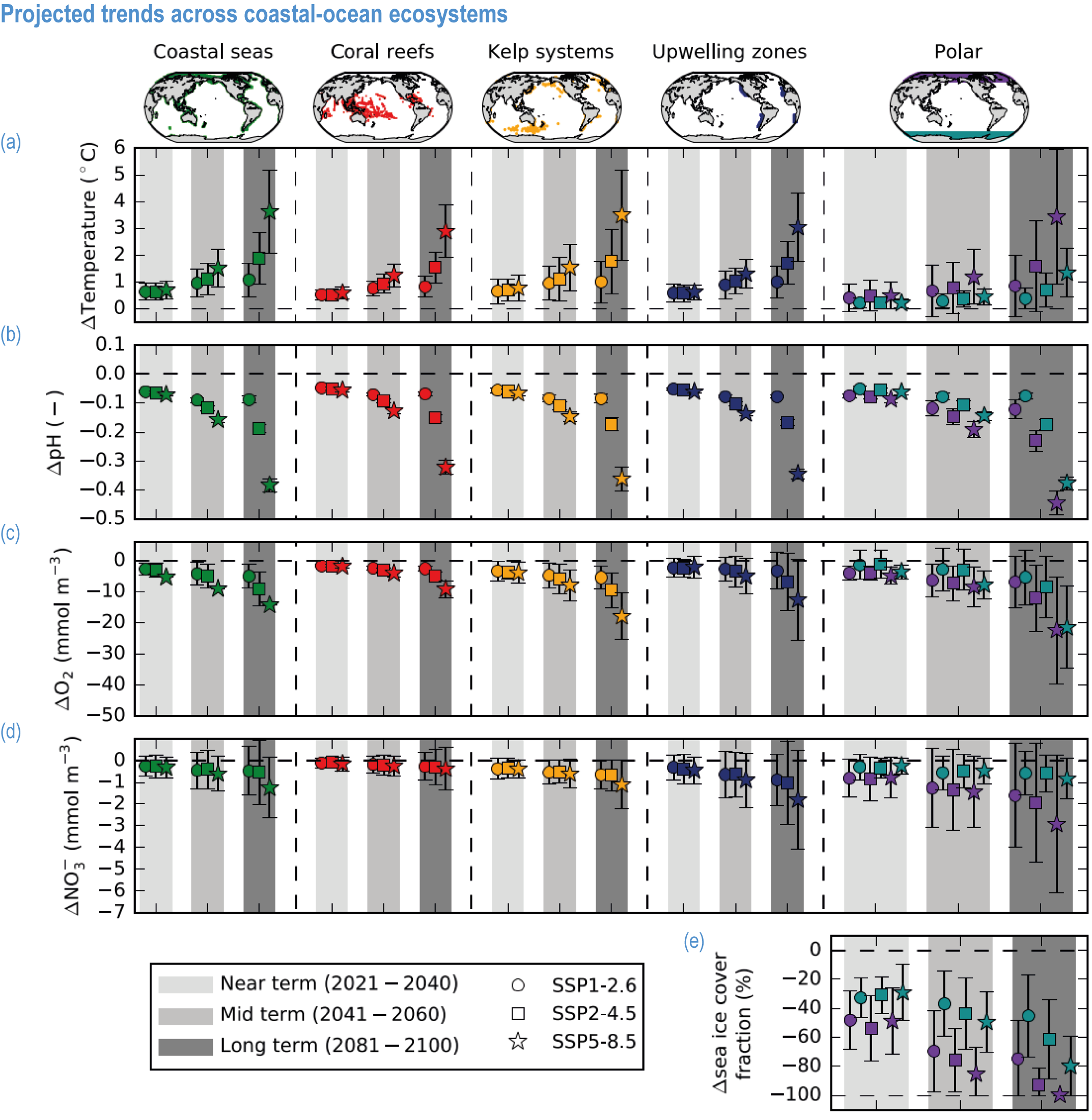Figure 3.7
Figure caption
Figure 3.7 | Projected trends across coastal-ocean ecosystems. Projected (a) warming, (b) acidification, (c) changes in dissolved oxygen concentrations, (d) changes in nitrate (NO3) concentrations and (e) changes in summer sea ice cover fraction (September and north of 66°N for the Northern Polar Oceans, and March and south of 66°S for the Southern Polar Ocean) for five coastal-ocean ecosystems. All projected trends are for the surface ocean, except oxygen concentration changes that are computed for the subsurface ocean (100–600 m depth) for the upwelling ecosystems and the polar seas. All projections are based on Coupled Model Intercomparison Project 6 (CMIP6) models and for three Shared Socioeconomic Pathways (SSPs): SSP1-2.6, SSP2-4.5 and SSP5-8.5 (Kwiatkowski et al., 2020). Anomalies in the near term (2020–2041), mid term (2041–2060) and long term (2081–2100) are all relative to 1985–2014. Error bars represent very likely ranges. Coastal seas are defined on a 1° × 1° grid when bathymetry is less than 200 m deep. Distribution of warm-water corals is from UNEP-WCMC et al. (2018). Distribution of kelp ecosystems is from OBIS (2020). Upwelling areas are defined according to Rykaczewski et al. (2015).
